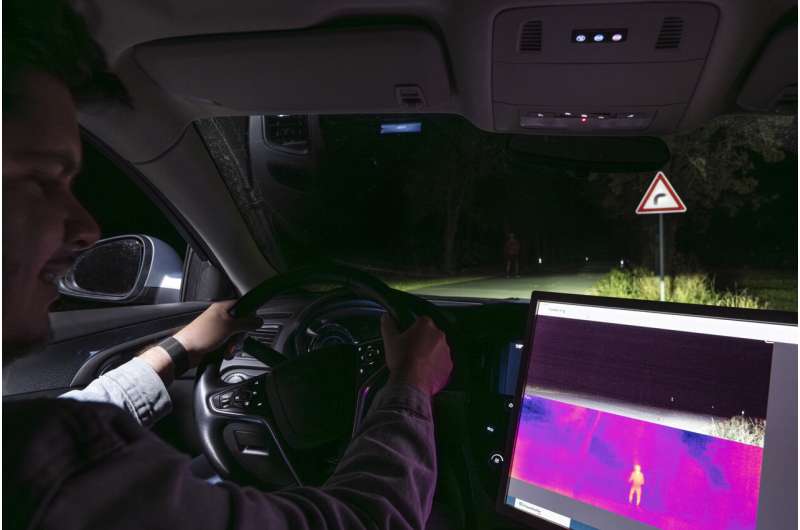As the seasons change, the driving conditions on our roads become increasingly challenging, with rain, fog, and early darkness posing serious threats to safety. However, a team of researchers from Fraunhofer IOF has developed a groundbreaking infrared camera that could be the solution to this problem. This innovative technology utilizes thermal imaging to detect pedestrians and cyclists, even in poor visibility conditions, enhancing safety for both autonomous vehicles and human drivers. Thermal imaging and autonomous driving are the key focus areas of this cutting-edge development.

Seeing the Unseen: Infrared Cameras for Improved Road Safety
As the seasons change, the driving conditions on our roads become increasingly challenging, with rain, fog, and early darkness posing serious threats to safety. Traditional camera systems and sensors, such as LIDAR and RADAR, can struggle to reliably detect pedestrians and cyclists in these poor visibility conditions.
Enter the revolutionary infrared camera developed by the Fraunhofer IOF team. This innovative technology operates in the wavelength range of 8 to 14 micrometers, the same range in which thermal radiation emitted by humans is found, both day and night. By harnessing the power of thermal imaging, this camera can detect the presence of people on the road with remarkable accuracy, even when visibility is severely limited.
What sets this infrared camera apart is its cost-effective yet powerful design. The team leveraged their expertise in multi-aperture cameras to construct the device from several small and affordable uncooled bolometer arrays. This modular approach allows the camera to capture a wide horizontal field of view, essential for detecting pedestrians and cyclists in challenging lighting conditions.
Enhancing Autonomous Driving Safety with Infrared Technology
The infrared camera developed by Fraunhofer IOF is particularly well-suited for autonomous driving applications, where a human driver may not be constantly observing the road ahead. By supplementing conventional camera systems and sensors, this innovative technology can provide an extra layer of safety in situations where visibility is poor, such as darkness, fog, or glare from oncoming traffic.
The camera’s impressive specifications, including fast optics (F/1.1) and high angular resolution (16 pixels/degree), combined with its compact and space-saving design, make it an ideal solution for integration into autonomous vehicles. This innovative approach, which utilizes commercially available infrared sensors and optics manufactured at the wafer scale, not only simplifies production but also significantly reduces the cost of the technology.
As autonomous driving continues to evolve, the integration of this infrared camera could play a crucial role in enhancing the safety and reliability of self-driving vehicles, ensuring that they can navigate even the most challenging road conditions with confidence.
Beyond Autonomous Vehicles: Versatile Applications of Infrared Cameras
While the primary focus of the Fraunhofer IOF team’s infrared camera is to improve safety in autonomous driving, this innovative technology has a wide range of potential applications beyond the automotive industry.
For instance, the camera could be utilized for detecting heat losses, a valuable tool for safety applications in monitoring landfills or during fire department operations. In the industrial sector, the camera could provide new concepts for process monitoring, ensuring that critical systems are functioning optimally and safely.
The versatility of this infrared camera highlights the far-reaching implications of thermal imaging technology. As the demand for enhanced safety and efficiency continues to grow across various industries, innovative solutions like this one from Fraunhofer IOF will play a crucial role in shaping the future of our world, from autonomous vehicles to industrial processes and beyond.
